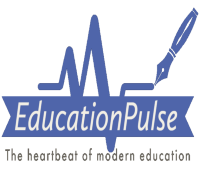In his book FOCUS, Mike Schmoker argues that focusing on what is essential (instead of continuing to adopt new methods for school improvement) will decrease the achievement gap. He argues that there are three “essential” areas to improve in schools:
What is essential?
- What we teach -coherent curriculum
- How we teach – structured lessons
- Authentic literacy – purposeful reading and writing in every discipline
What does this look like?
What We Teach:
Schmoker is clear that the key to what we teach starts with a coherent, user-friendly curriculum. He believes that topics and standards should be collectively selected by a team of teachers, and then reviewed as necessary. Schmoker takes time to review Common Core standards, and one of his main arguments is that the curriculum “should reflect a deliberate reduction of the standards contained in our typically verbose standards documents” (Marzano, 2003). While this is not necessarily possible in many states and districts, it is an important area to note that teachers should at least be very familiar with their standards, and develop the most coherent curriculum around them possible.
*Schmoker’s template for a coherent curriculum can be found here: Appendix B: Curriculum Templates
How We Teach:
Schmoker argues that effective teaching does not consist of rare, hard-to-grasp, complex, or unique skills. Most effective teaching can be “characterized by seemingly mundane whole-class practices that can be successfully performed by any conscientious instructor” (Schmoker, 2016) He continues to make the argument that effective teaching techniques are old – we’ve known about and used these practices for decades. Effective lessons follow the same basic structure:
- A clear learning objective or target
- An attempt to create interest (anticipatory set, Do Now)
- Teaching and modeling in small ‘scaffolded’ steps
- Practice or guided practice
- Checks for understanding
- Independent practice/assessment
Authentic Literacy:
Schmoker argues that “Genuine literacy is still the unrivaled key to learning both content and thinking skills” (Schmoker, 2018). This should include purposeful reading, discussion, and writing. His model embraces the best aspects of Common Core, but rejects “grade-by-grade minutiae found in the standards documents”. Schmoker’s main argument when it comes to Authentic Literacy is that, quite simply, students should “Read Lots”. They should read or be read to for at least 60 minutes a day (instead of the average 4 minutes currently). They should also be writing for at least 40 minutes a day. Students should read a wide variety of complex tests that offer them new knowledge, new ideas, and a new language. Schmoker believes that following this basic structure will improve students’ ability to read and write, therefore improving their performance overall.
The Literacy Template:
1. Teach now or difficult vocabulary from the text
2. Establish a purpose for reading (question or prompt)
3. Teach and model for students how to annotate and take notes in response to prompt
4. Have students discuss the work. In pairs then as a class.
5. Have students write in response to the prompt, using supporting references from the text.
While Schmoker’s book is very ELA-focused, he does break down his FOCUS method in a chapter each about History, Science, and Math. Schmoker shows how through well-planned lessons, and strong authentic literacy, students can learn and close achievement gaps in all of their subject areas. Schmoker says “A focus on these three elements would have more impact than all other initiatives combined” in improving school achievement. His argument is that taking a step back and focusing on the basics will lead to success. Other educational initiatives cannot be successful if these three basic elements are not already met.
When I first read FOCUS last year, I both agreed with and disagreed with his points. I agree with his main three points in terms of focusing education on the What, the How, and the Literacy skills. I did struggle with his argument about removing unnecessary standards, as it is not something that is possible in MA. In terms of the other areas, I actually implemented them into my own planning and practice. At the end of the 20-21 school year, I required each Humanities teacher to plan into their Pacing Guide for the upcoming school year both a reading and a writing assignment for each quarter. I felt at the time, and still feel very strongly, that reading and writing across the curriculum is hugely important for our students. I will continue to ask that teachers consciously think about how and when Authentic Literacy can be brought into their classrooms.
For more information on Mike Schmoker and FOCUS please visit the following websites:
How Schools Can Accomplish More by Doing Less – Mike Schmoker
Focus: Elevating the Essentials to Radically Improve Student Learning, 2nd Edition – ASCD
